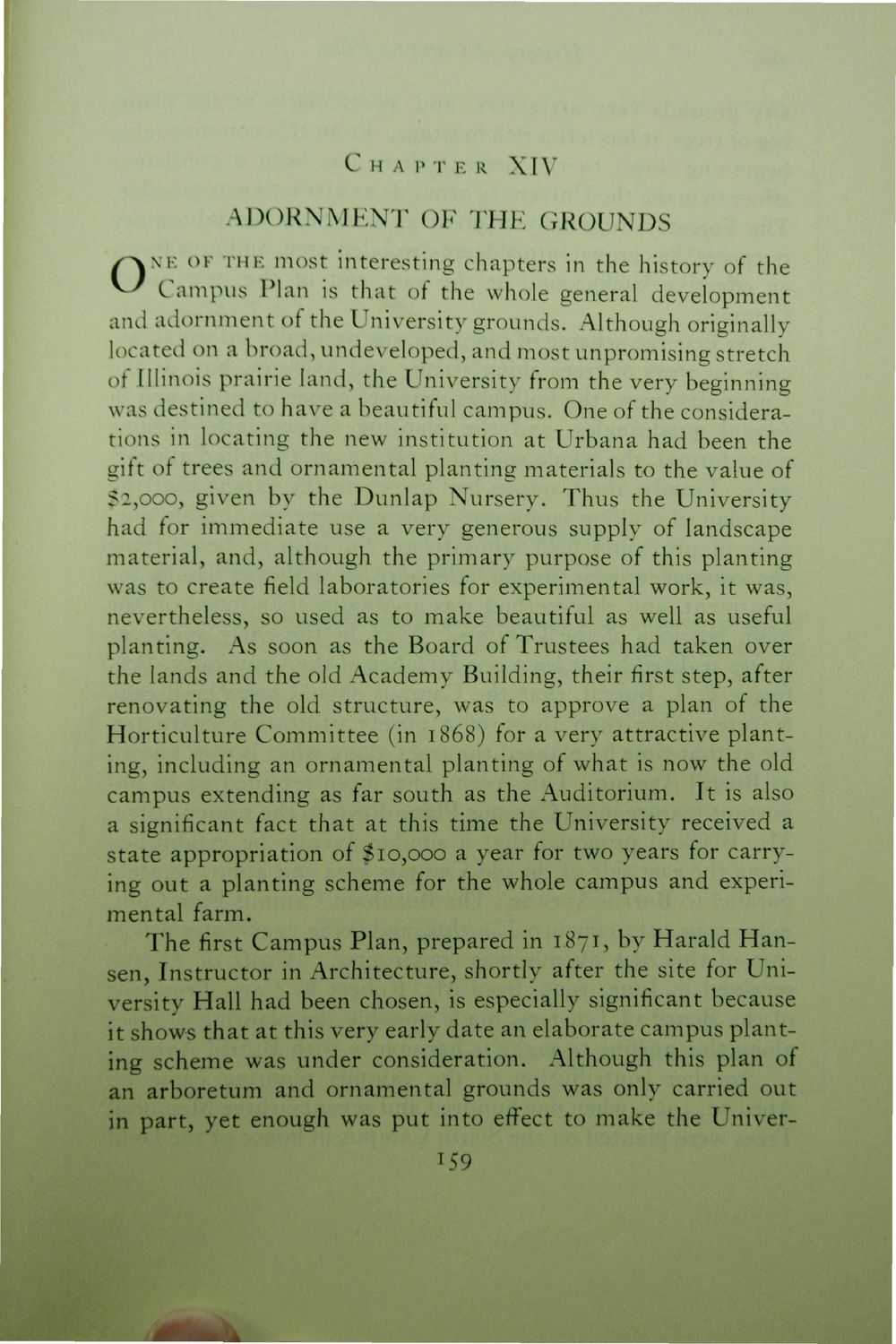| |
| |
Caption: Book - 30 Year Master Plan (Tilton & O'Donnell)
This is a reduced-resolution page image for fast online browsing.

EXTRACTED TEXT FROM PAGE:
CHAPTER XIV ADORNMENT OF T H E GROUNDS A N E OF THE most interesting chapters in the history of the " Campus Plan is that of the whole general development and adornment of the University grounds. Although originally located on a broad, undeveloped, and most unpromising stretch of Illinois prairie land, the University from the very beginning was destined to have a beautiful campus. One of the considerations in locating the new institution at Urbana had been the gift of trees and ornamental planting materials to the value of $2,000, given by the Dunlap Nursery. Thus the University had for immediate use a very generous supply of landscape material, and, although the primary purpose of this planting was to create field laboratories for experimental work, it was, nevertheless, so used as to make beautiful as well as useful planting. As soon as the Board of Trustees had taken over the lands and the old Academy Building, their first step, after renovating the old structure, was to approve a plan of the Horticulture Committee (in 1868) for a very attractive planting, including an ornamental planting of what is now the old campus extending as far south as the Auditorium. It is also a significant fact that at this time the University received a state appropriation of $10,000 a year for two years for carrying out a planting scheme for the whole campus and experimental farm. The first Campus Plan, prepared in 1871, by Harald Hansen, Instructor in Architecture, shortly after the site for University Hall had been chosen, is especially significant because it shows that at this very early date an elaborate campus planting scheme was under consideration. Although this plan of an arboretum and ornamental grounds was only carried out in part, yet enough was put into effect to make the Univer159 JMtannlk
| |